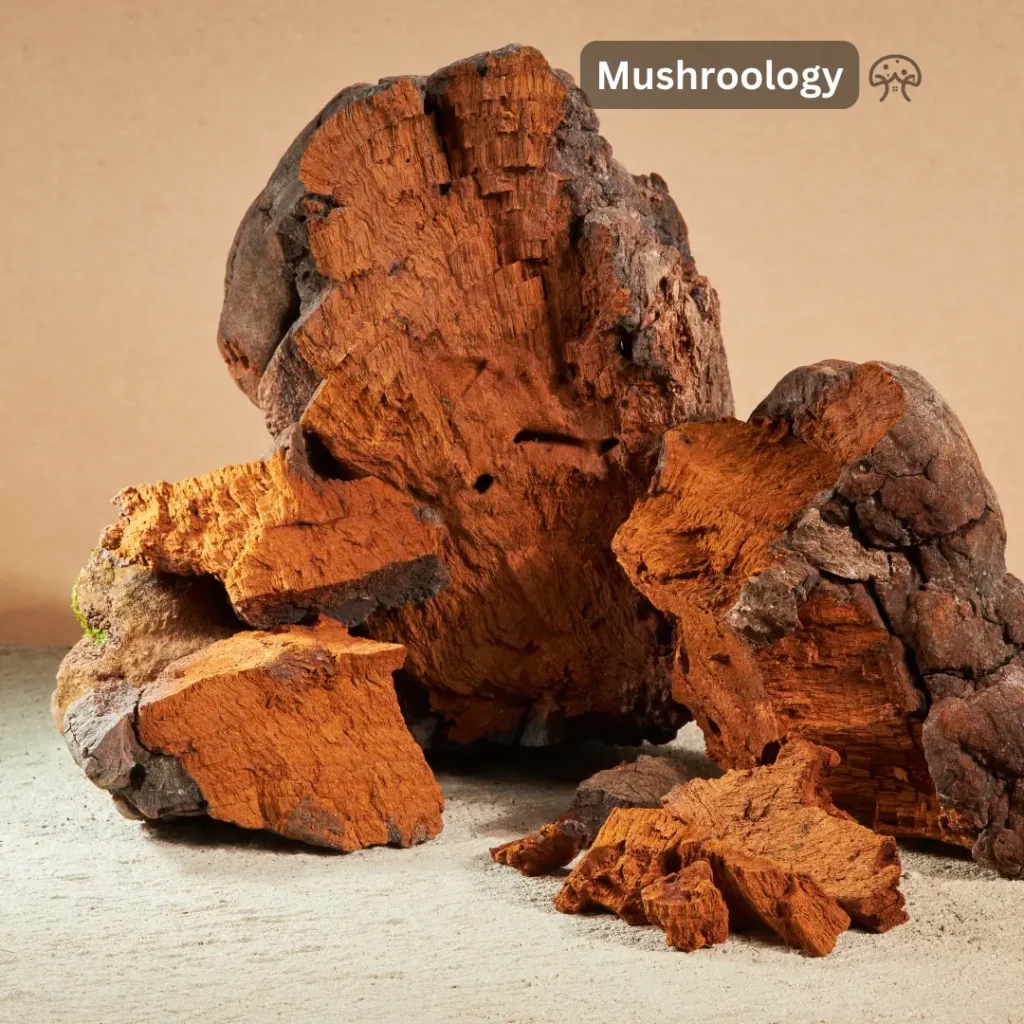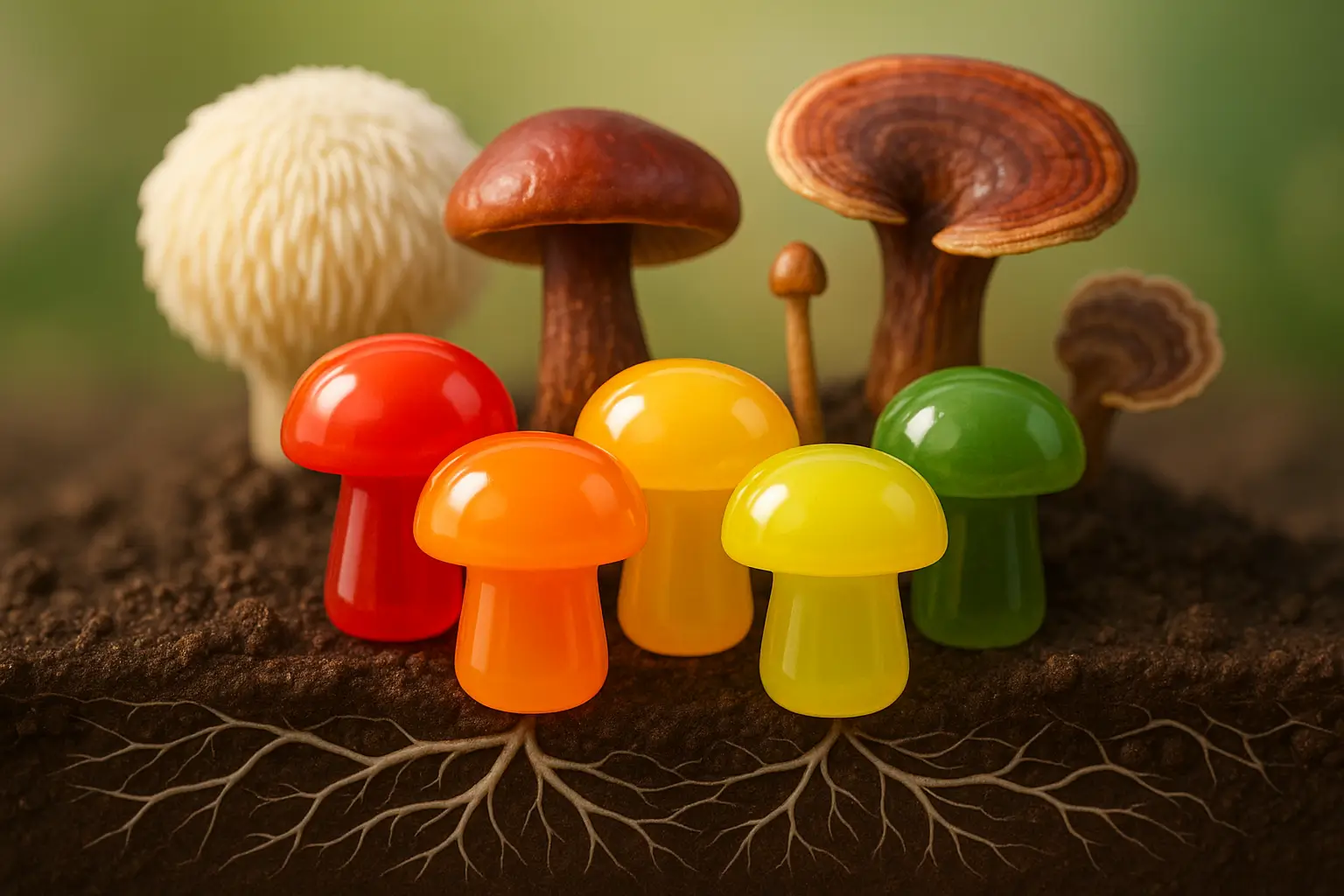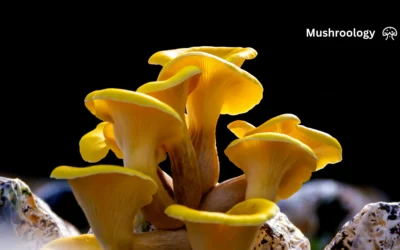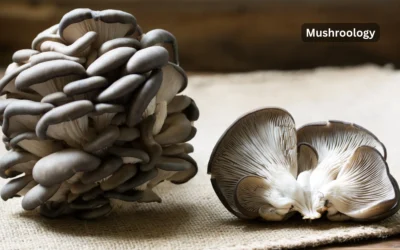Why Mushroom Gummies Are Trending
Walk into any health store today, and you’ll see shelves lined with colorful bottles of mushroom gummies. What used to be a niche supplement has exploded into mainstream wellness. People are searching for “best mushroom gummies” “mushroom gummies for focus,” and even “mushroom gummies for ADHD” more than ever before.
This isn’t just another health fad. These chewy supplements promise to boost your brain power, strengthen your immune system, and give you natural energy. But here’s the thing: not all mushroom gummies are created equal.
In this guide, we’ll break down everything you need to know. You’ll learn the difference between fruiting body and mycelium (and why it matters), understand what those confusing extraction ratios mean, and discover how to pick the right mushroom gummies for your needs.
The Functional Mushroom Boom: What’s Driving the Hype?
Functional mushrooms aren’t the kind you put on pizza. These are special mushrooms that people have used for health benefits for thousands of years. Each type offers something different:
- Lion’s mane gummies might help you think clearer and focus better
- Reishi gummies could help you sleep better and feel less stressed
- Turkey tail gummies may boost your immune system
- Chaga gummies pack antioxidants that fight cell damage
- Cordyceps gummies might give you more energy for workouts
Why gummies? Simple. They taste good and they’re easy to take. No more choking down bitter powders or horse-sized pills. You can pop a couple gummies with your morning coffee and go about your day.
The numbers don’t lie either. Searches for “lion’s mane gummies for focus” and “cordyceps gummies for energy” keep climbing. People want natural ways to feel better, and mushroom gummies fit the bill perfectly.
The Growing Market
More people are catching on to mushroom gummies every month. The brands that are winning use high-quality fruiting body extracts and put clear information on their labels. They’re not trying to hide anything from customers.
Fruiting Body vs. Mycelium: Understanding the Parts of a Mushroom
Here’s where things get interesting. When you buy mushroom gummies, you’re getting one of two main parts of the mushroom: the fruiting body or the mycelium.
Think about an apple tree. The apple you eat is like the fruiting body – it’s the mushroom cap and stem that you’d recognize as a “mushroom.” The mycelium is like the tree’s root system – a web of tiny threads that grows underground.
This difference matters way more than you might think.
Fruiting bodies are packed with good stuff. They’re loaded with beta-glucans (compounds that may boost your immune system) and triterpenoids (which might help with stress). Mycelium grown on grain? Not so much.
When people search “fruiting body vs mycelium gummies,” they’re trying to figure out which one works better. The answer is pretty clear.
Why Fruiting-Body Extracts Are Preferred
The research tells a clear story. Real mushroom fruiting bodies contain 30-40% beta-glucans – the compounds you actually want. Mycelium grown on grain? It only has about 5-7% beta-glucans and up to 40% starch.
That’s a huge difference. You’re basically paying for rice or oat filler instead of actual mushroom benefits.
Fruiting bodies also give you triterpenoids and other helpful compounds that mycelium products can’t match. Smart brands stick to fruiting body extracts to avoid all that grain filler.
The Case for Mycelium
To be fair, mycelium isn’t completely useless. It does contain some nutrients, and some researchers think mycelium and its fermented growing medium might help your immune system in unique ways.
But here’s the catch: many mycelium products are mostly rice or oats with a little bit of mycelium mixed in. When you read the label, you might be surprised how little actual mushroom you’re getting.
What Does “10:1 Extract” Mean?
You’ve probably seen numbers like “10:1 extract” on mushroom gummy bottles and wondered what they mean. It’s actually pretty simple.
A 10:1 extract means they used 10 grams of raw mushroom to make 1 gram of extract. They concentrated all the good stuff into a smaller amount. That’s why extracts are usually more powerful than regular mushroom powder.
Making extracts also breaks down tough cell walls called chitin. Your body has a hard time digesting chitin, so extracts are easier to absorb than plain mushroom powder.
But don’t just look for the highest number. A 50:1 extract sounds impressive, but it doesn’t mean much if they started with low-quality mycelium on grain. The source material and how they extract it matters more than the ratio.
Popular Mushroom Ingredients in Gummies
Let’s look at the most popular mushrooms you’ll find in gummies and what they might do for you.
Lion’s Mane
Lion’s mane looks like a white pom-pom and might be the closest thing to a “smart drug” that nature makes. People take lion’s mane gummies hoping to think clearer, remember better, and focus longer.
The mushroom contains compounds that might help nerve cells grow and stay healthy. Students and working professionals often search for “lion’s mane gummies benefits” when they want a natural brain boost.
Reishi
Called the “mushroom of immortality” in ancient China, reishi might help you chill out and sleep better. It has a bitter, woody taste that gummies hide perfectly.
Reishi gummies are popular with people dealing with stress, anxiety, or sleep problems. The mushroom contains triterpenoids that might help your body handle stress better.
Cordyceps
Cordyceps grows on insects in the wild (don’t worry, the supplement versions are grown on rice or other grains). Athletes and fitness enthusiasts love cordyceps gummies because they might boost energy and endurance.
This mushroom might help your body use oxygen better, which could mean better workouts and less fatigue.
Chaga
Chaga looks like burnt charcoal on the outside but has orange flesh inside. It’s packed with antioxidants that fight free radicals in your body.

People take chaga gummies for general health and immune support. It’s not as targeted as lion’s mane for the brain or cordyceps for energy, but it’s a solid all-around choice.
Turkey Tail
Turkey tail gets its name from its colorful, fan-like appearance. It’s one of the most studied mushrooms for immune support and gut health.
The mushroom contains polysaccharides that might help balance your immune system. People often search for turkey tail when they want to stay healthy during cold and flu season.
Clean-Label and Quality Considerations
“Clean label” is a big deal in the supplement world right now. People want products that are organic, non-GMO, vegan, and don’t have a bunch of weird additives.
When you’re shopping for mushroom gummies, look for these things:
- Whole fruiting body extracts (not mycelium on grain)
- Clear extraction ratios (like 10:1 or 8:1)
- Minimal fillers and sweeteners
- Third-party testing for purity and potency
You’ll also want to check for certifications like USDA Organic or cGMP (good manufacturing practices). These show that the company follows strict quality standards.
Avoid products that don’t clearly state what part of the mushroom they use or how they extract it. If a company is being vague, there’s probably a reason.
How to Choose the Best Mushroom Gummies: A Buyer’s Checklist
Here’s your step-by-step guide to picking good mushroom gummies:
1. Figure out your goal
- Need better focus? Look for lion’s mane
- Want more energy? Try cordyceps
- Stressed out? Consider reishi
- Want immune support? Check out turkey tail or chaga
2. Check the mushroom source
- Look for “fruiting body extract”
- Avoid products that just say “mushroom powder” or “mycelium”
- Find the extraction ratio (10:1 is common)
3. Look at the dose
- Most effective gummies contain 500-1000mg of mushroom extract per serving
- Some products add vitamin C or other nutrients for better absorption
4. Read the ingredient list
- Fewer ingredients is usually better
- Watch out for lots of sugar or artificial colors
- Look for natural flavors and sweeteners
5. Verify quality
- Find products that are third-party tested
- Look for organic certification if that matters to you
- Check if the company is transparent about their sourcing
When in doubt, search for reviews and comparisons. Terms like “best lion’s mane gummies 2025” or “mushroom gummies review” can help you find detailed comparisons.
Safety and Potential Side Effects
Mushroom gummies are generally safe for most people. Because they’re extracts, they’re often easier on your stomach than raw mushroom powder.
That said, some people might experience:
- Mild stomach upset
- Drowsiness (especially with reishi)
- Interactions with medications
If you’re pregnant, nursing, or taking medications, talk to your doctor before starting any new supplement. This is especially important if you have autoimmune conditions or take blood thinners.
The research on long-term use is still developing, so start with the recommended dose and see how you feel.
Your next steps
Mushroom gummies can be a great addition to your wellness routine, but quality matters. Remember these key points:
- Fruiting body extracts beat mycelium products every time
- Extraction ratios like 10:1 show concentration, but source quality matters more
- Clean labels with minimal additives are worth the extra cost
- Third-party testing gives you confidence in what you’re buying
Ready to try mushroom gummies? Start with your biggest health goal and pick one or two mushrooms that match what you want to achieve. Don’t feel like you need to try everything at once.
Take your time reading labels and comparing products. The best mushroom gummies are made by companies that are proud to share exactly what’s in their products and how they make them.





